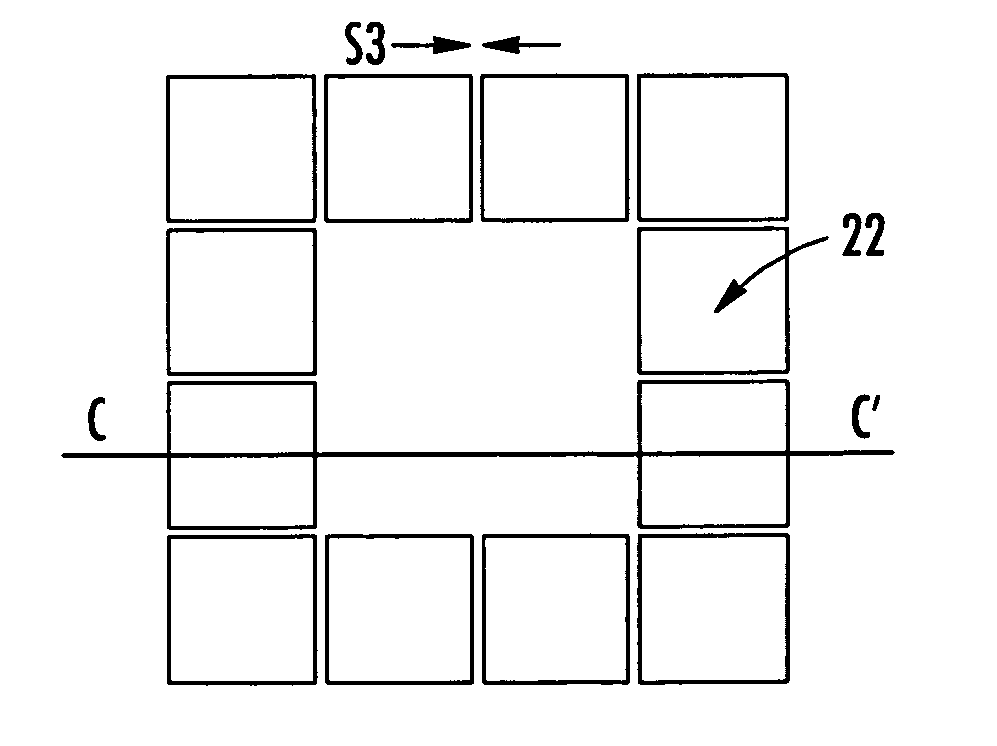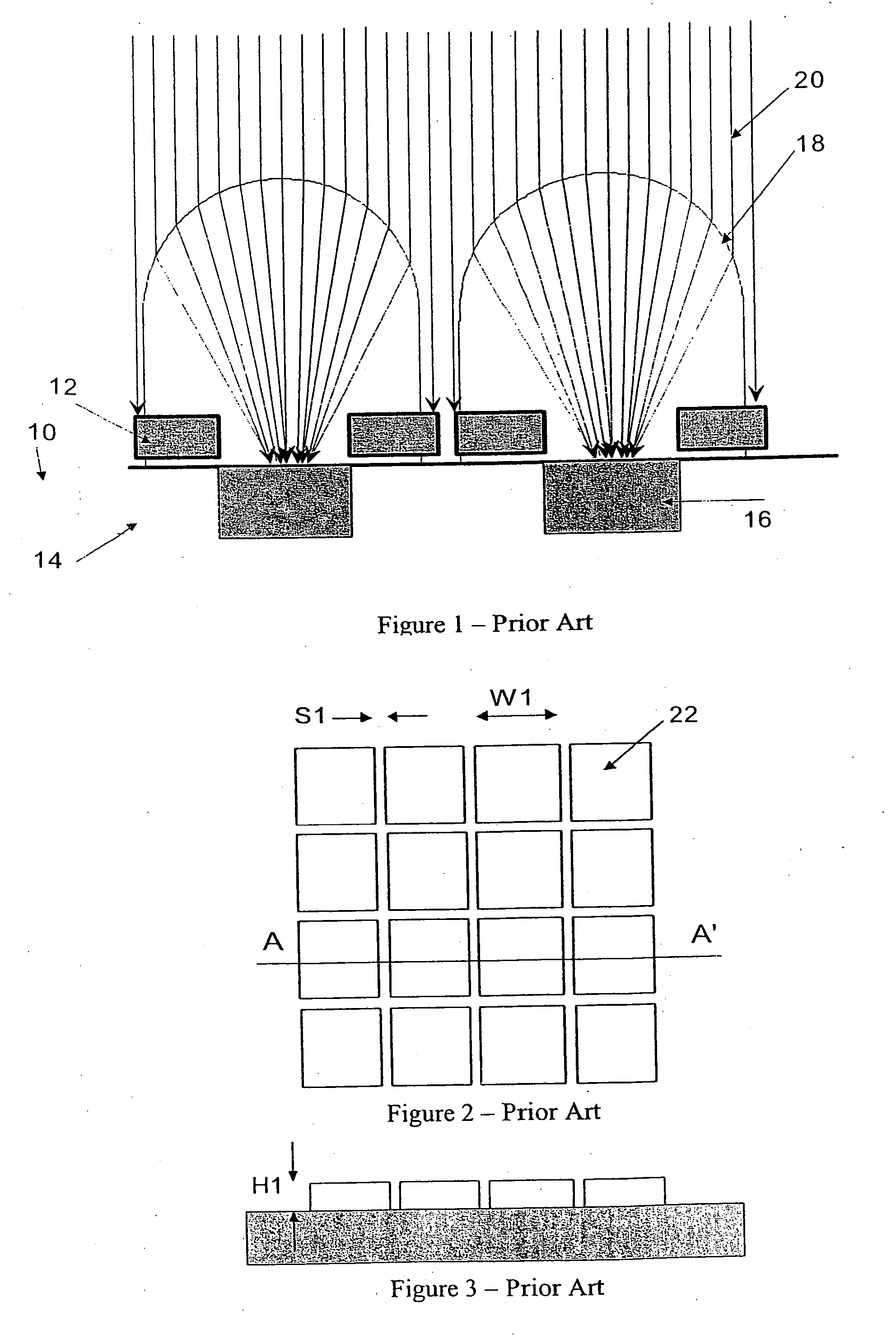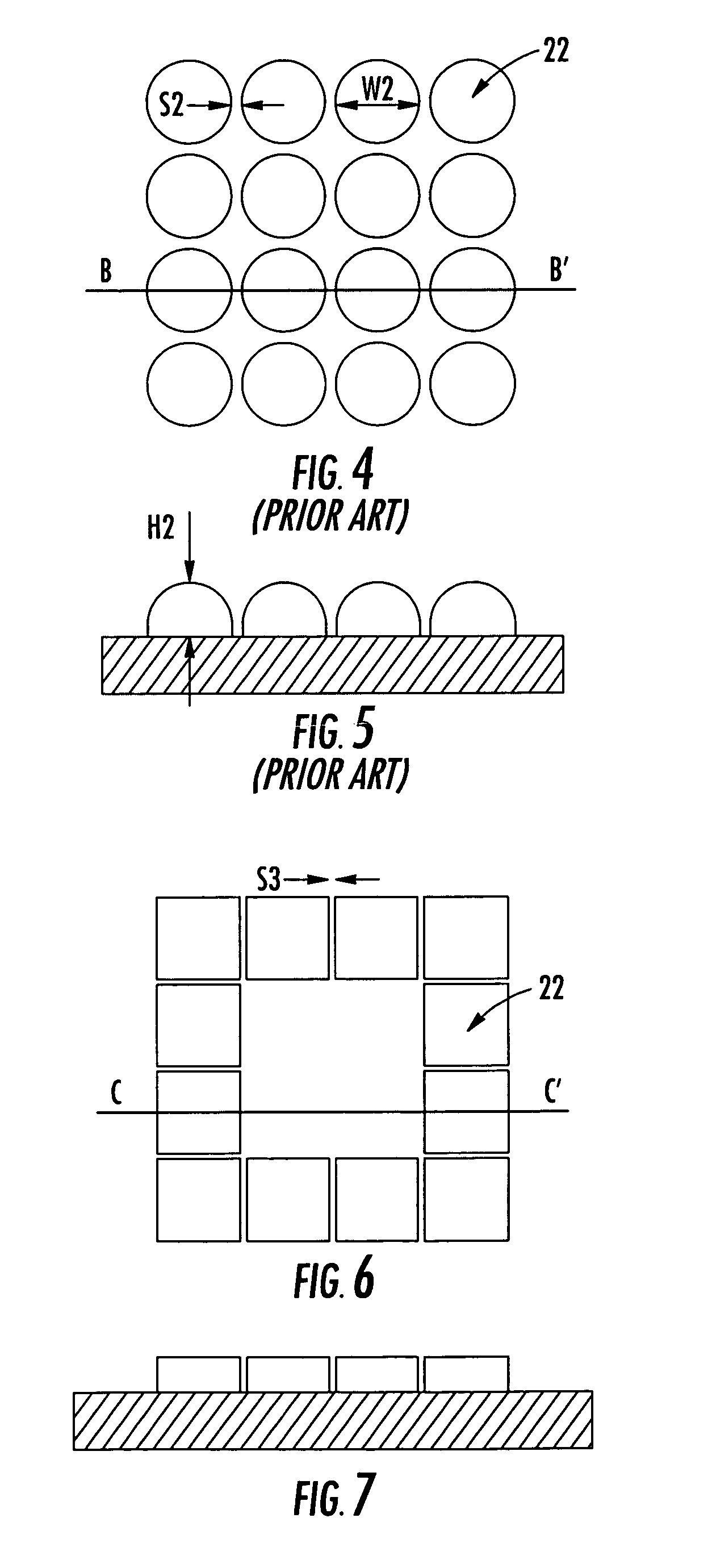Sensors
a technology of sensors and sensors, applied in the field of sensors, can solve problems such as adding to manufacturing costs
- Summary
- Abstract
- Description
- Claims
- Application Information
AI Technical Summary
Benefits of technology
Problems solved by technology
Method used
Image
Examples
first embodiment
[0027]FIGS. 6-9 illustrate the present invention. As shown in FIG. 6, photoresist volume portions 22 are spaced apart by a distance S3, where S31, and are formed in a defined shape, namely a ring. The value of S3 is chosen to ensure that adjacent volume portions 22 merge together during reflow. S3 could even be made as low as zero.
[0028] When S3 is zero, a reflow step is not necessary to ensure that a barrier of photoresist material is formed for defining a region suitable for constraining bio-optical reagent or analyte sample materials. However, a reflow step can still be performed to ensure that the edges and walls of the patterned regions and channels are smoother. The increased smoothness helps to reduce resistance to the flow of bio-optical reagent or analyte sample materials.
[0029] During the heating process the microlens material will melt. As the squares are closed, under the influence of gravity, the material will touch and surface tension will cause them to join up. FIG. ...
fourth embodiment
[0032] More complex shapes can also be constructed. FIG. 14 shows a fourth embodiment, where four annuli as shown in FIG. 6 are combined to form a microlens structure 32 comprising four sites 34.
[0033] With this structure, four different reagents could be deposited at each of the four sites 34. The microlens material 32 provides an effective barrier between the sites to isolate reagents located in the neighboring sites 34. This sensor could then provide the sensing and / or detection of up to four different chemicals in the analyte.
fifth embodiment
[0034]FIG. 15 shows a fifth embodiment, where two sites 36, 40 are connected by a channel 38. The connection allows the analyte to flow between different sites.
[0035] It will be appreciated that the regions formed by the particular shapes and formations referred to above are only a very few of a large number of regions that can be formed using the techniques of the present invention, and the present invention is in no way to be considered as being limited to these particular regions.
[0036] The principles of the invention, when applied to bio-optical sensor systems, allow both accurate deposition of a reagent during manufacture of the system and also the production of channels and guides to assist the flow of the analyte during operation of the system.
[0037] It is also to be recognized that the top surface of the sensor is usually formed from silicon nitride to protect the device. This material can also be patterned and etched to provide similarly defined regions that serve similar...
PUM
| Property | Measurement | Unit |
|---|---|---|
| distance | aaaaa | aaaaa |
| temperature | aaaaa | aaaaa |
| volumes | aaaaa | aaaaa |
Abstract
Description
Claims
Application Information
 Login to View More
Login to View More - R&D
- Intellectual Property
- Life Sciences
- Materials
- Tech Scout
- Unparalleled Data Quality
- Higher Quality Content
- 60% Fewer Hallucinations
Browse by: Latest US Patents, China's latest patents, Technical Efficacy Thesaurus, Application Domain, Technology Topic, Popular Technical Reports.
© 2025 PatSnap. All rights reserved.Legal|Privacy policy|Modern Slavery Act Transparency Statement|Sitemap|About US| Contact US: help@patsnap.com



